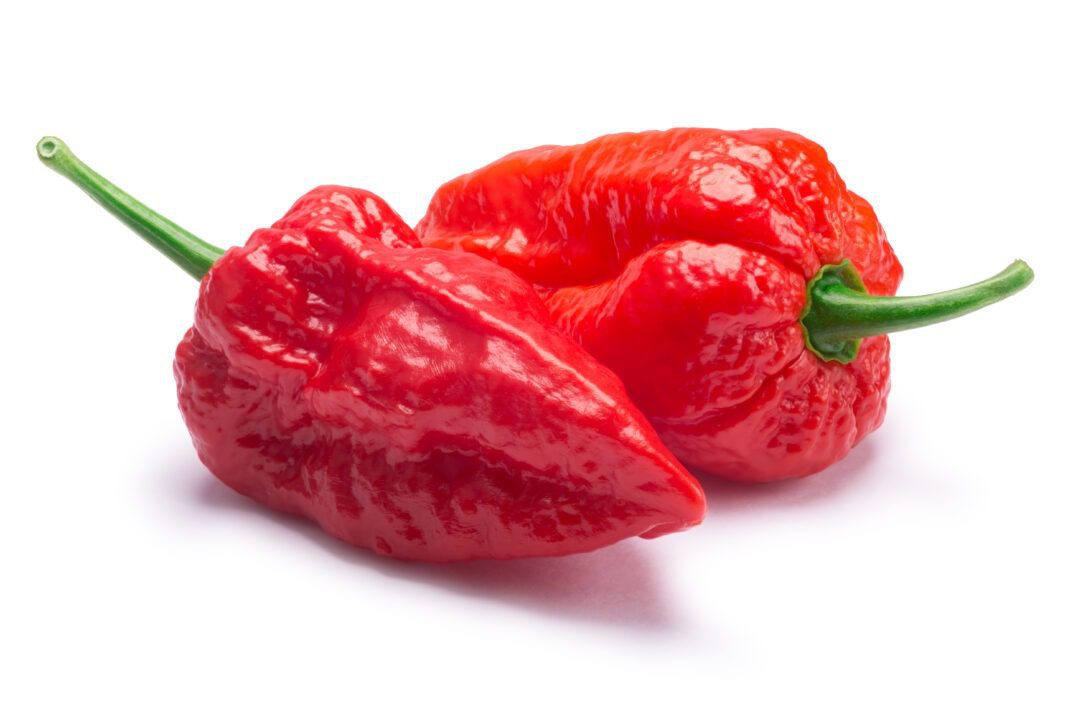Introduction
Ghost pepper (Capsicum chinense, Jacq.) is one of the ‘hottest’ known chilies in India and the third hottest in the world according to the Guinness world records measuring over 1,000,000 SHU (Guinness World Records, 2006). It is also known as bhut jolokia. As ‘bhut’ refers to the ghost or poison and ‘Jolokia’ means chili pepper or Capsicum pepper. One seed from ghost pepper can create intense pain sensations in the mouth for up to 30 min before subsiding this defines how hot is ghost pepper.
Riped ghost pepper is available in different colors such as red, yellow, orange, white, purple, or chocolate. The ghost pepper is popular for its high pungency and unique aroma as well as medicinal properties. Both fresh and dried forms, pickle preparation, flavoring curries, and for the treatment of various human ailments like gastritis, arthritis, and chronic indigestion problems (1).
Common Names of Ghost pepper
Bhoot Jolokia’ or Bih Jolokia (in Assam), Naga king chili or Naga Jolokia (in Nagaland), Omorok (in Manipur) and Ghost pepper or Ghost chili (by the western media), Saga Jolokia, Indian mystery chili, and Indian rough chili (after the chili’s rough skin), ghost chili pepper, ghost Jolokia, Nagahari, Raja Mircha, Raja chili or Borbih Jolokia, Borbih Jolokia, Naga Jolokia, Naga Morich, Naga Moresh and Dorset Naga(it’s derivative from Bangladesh).
Geographical distribution
The ghost pepper is cultivated in the Nagaland and Assam region of northeastern India and parts of neighboring Bangladesh and Nepal. In India, the ghost pepper is being grown and consumed in Kohima, Peren, Mon, and Dimapur areas in Nagaland as well as in Assam, Manipur, Mizoram, and Arunachal Pradesh.
Ghost pepper health benefits
1. Presence of a high amount of capsaicin in ghost pepper
It contains 2-4 % of capsaicin which is more than any other chili species (approx. 1%). Thus ghost pepper showed the highest E-capsaicin concentration than any other different types of peppers and sauces (2).
2. Antimicrobial properties
The presence of capsaicin in ghost pepper is very effective to fight against different microorganisms. Examples are Salmonella paratyphi A, Salmonella paratyphi B, and Micrococcus luteus. Therefore bhut jolokia may use as an alternative antimicrobial agent for the protection of typhoid and paratyphoid fever as well as skin infections (3).
3. Anti-inflammatory properties of ghost pepper
It contains capsaicin and dihydrocapsaicin in 5.36 mg. Which equivalent to aspirin (15.2 mg) and 18 times greater than in Scotch Bonnet and Jalapeno. Therefore it is more effective to reduce pain, fever, or inflammation than aspirin and any other chili (4).
4. Antioxidant and anti-cancer properties
Intake of the ghost pepper in a lower amount shows DNA protective and antioxidant activities. This is mainly due to capsaicinoids, phenolic acids, and ascorbic acids. It also reduces cell proliferation and induces apoptosis of cancer cells through DNA damage (5). Therefore consumption of lower doses of bhut jolokia may helpful for cancer (human adenocarcinoma cell) chemopreventive effects (6).
5. Anti-arthritic properties of ghost pepper
As it contains a bioactive compound (transferosomes and ethosomes) which decreases the joint swelling, hyperalgesia, edema, and pain-sensation without any side effect thus bhut jolokia extract show analgesic as well as anti-arthritic properties (7).
Ghost pepper side effect
Risk of food esophageal rupture or food pipe wall- As we know that ghost peppers is highly spicy which can induce esophageal rupture, boerhaave syndrome with symptoms like severe retching, vomiting, abdominal and chest pain which could be lethal a cause even death thus precaution should be needed if you feel discomfort after intake (8).

Please share me how to store fresh Ghost pepper.